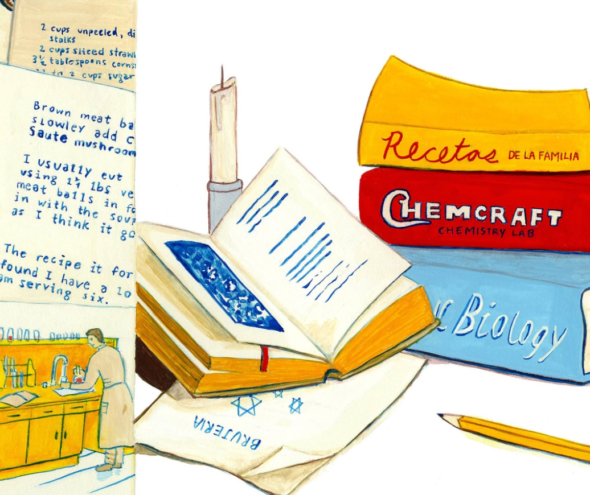Michelle Nahmad is a Brooklyn-based artist whose film, The Shochet, won the Student Film division of the 2017 SHAPE AT&T Entertainment Project. The film was her capstone project for a Communication Design BFA at Washington University in St. Louis, and Michelle was excited to find AT&T’s competition well-suited for her work. Incredibly, The Shochet was Michelle’s first film—it is, as she describes it, ‘a coming of age story, with blood and chickens,’ using mixed media animation to reimagine a compelling piece of family history.
In light of AT&T’ Entertainment Group’s newest challenge, this seemed an opportune moment to catch up with Michelle, both in acknowledgement of her great achievement and to reflect on the continuing vitality of film, especially for emerging and student artists.
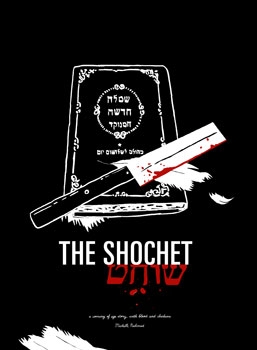
Tell us about the inspiration for the film.
The Shochet is based on one of my grandmother’s stories. She came from a small Jewish immigrant community in Costa Rica and I always loved traveling back in time by listening to her tell stories. While my grandmother’s community is somewhat unique, her story is really the story of so many immigrants, people who came from nothing and had to make it work in an environment that was so drastically different from their homes (in this case, from Poland and Russia to Costa Rica).
I was very lucky that my grandmother started writing some of these stories down and I chose this particular story because it was funny but also really telling about her community and the tradition they were trying to hold onto in a space that didn’t necessarily welcome that.
Why did you decide to mix media and animation techniques?
I came into this project as a designer and illustrator, very much a maker of all kinds. I had incorporated multimedia in my own design and illustration work but The Shochet was my first real film.

From The Shochet.
A lot of films I had seen and admired, especially the shorts, were handmade and stop-motion. It’s funny because to most people, those seem like very complicated and time-consuming approaches (and they definitely are), but to me, they made the most sense. I could only understand how to tell the story by working through the materials. I could draw and build but I didn’t have a background in filmmaking or in live-action, so this blending of techniques really suited me. It also gave me the freedom to play with different elements in a single story.
Any challenges that accompanied this medley?
Part of the challenge (and the pleasure, because I really do like working with different materials) was in creating a system where these media could all live in one story but still have continuity. I wanted the audience to be able to identify the character throughout so it wouldn’t be jarring. I had to develop a system where all these ideas could exist in one world, where I could make stop-motion puppets, do cut paperwork, and work with type.
What was that process like? Was it trial and error?
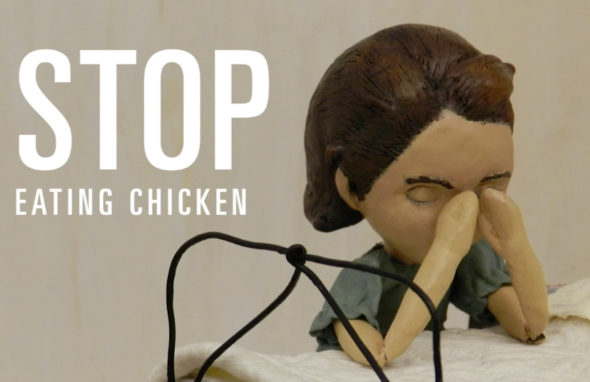
From The Shochet.
The text and the narrative were really what led. I started with audio that I edited and cut down to serve as a kind of script, based on a mix of what my grandmother had written and also what she spontaneously said when I got her to tell the story again. Then, with the narrative driving everything, I created a really rough storyboard, knowing that interesting things would result that I wouldn’t have anticipated before actually working with the material. It was kind of a mix of planning and spontaneity, and then going back and forth between those things.
Who did you hope this film will touch and how?
At first, I thought I would be a little selfish since this was my thesis project, and focus on a more personal subject. I decided to highlight the particular community that I’d grown up around, which was unfamiliar to a lot of people.

Self-portrait.
I realized, especially after moving away from Miami where I grew up to go to school in St. Louis, that many people were surprised by my background. I identify as Hispanic and also Jewish and I have Middle Eastern heritage as well. Though my initial motivation in highlighting this story was more personal, focusing on this immigrant community that embodied a similar mix of distinct cultures, I received responses from others that identified with the film and appreciated being reflected in this very specific way.
It became both a personal project and something that connected to a larger audience. I wanted to share and explore this unique community many people don’t know about, and also for the community to see themselves. I wanted to reflect them in a way that wouldn’t stereotype, but would rather come out of a personal experience that involved questioning a bit of tradition and the way things are done or assumed.
What kinds of responses have you gotten?
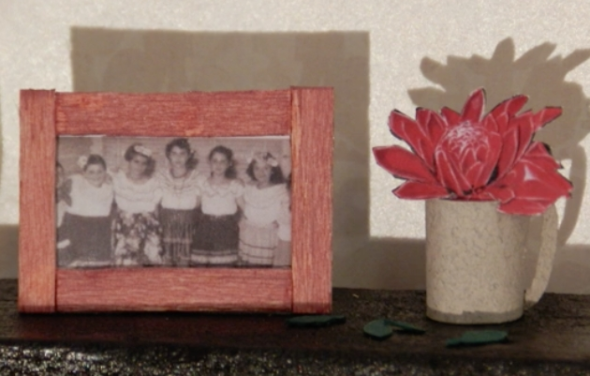
From The Shochet.
Overall, I’m lucky that, especially from family and friends, the responses have been really positive. I try to be an honest and forthright person, both in my beliefs and in the way that I tell stories. Ideally, it’s hard for people to get upset when you’re just sharing a personal experience—I mean, one would hope. I’m not trying to make any statements of right or wrong or criticize someone else by just sharing an experience.
How do you think your other creative work influences your filmmaking?
I do a mix of graphic design, illustration, and other sorts of narrative work. I recently completed an MFA in Visual Narrative from SVA which blends creative writing with visual development of all kinds, where medium and format can be anything you’re interested in. It’s all linked for me—just different tools to tell a variety of stories. For my masters thesis, I created an illustrated book called Bruja. It’s fiction but it’s related to the community from The Shochet. It almost feels like an extension of that, a very different style but still part of the same oeuvre.
Any special technology you’re working with or excited to work with in the future?
After I did The Shochet, I experimented with doing another stop motion story and I tried Dragonframe. With that software, I got to explore the next level of what I had been doing before, which was pretty cool.
For a lot of the things I do, I’m somewhat analog—I enjoy mixing a more physical process back into the digital space. I still really like getting hands-on in my work so I think any tech that allows me to expand on that in a compelling way I would love to work with.
In what ways was SHAPE significant for you?
Being acknowledged at an event like that and being given that title of ‘filmmaker’ was a really different feeling for me. I always like learning new things, trying my hand at different ways to tell stories, and I felt like SHAPE inspired me to consider working with more collaborative teams, possibly doing live action and other kinds of directing. That experience, being among all those amazing storytellers, inspired me to think about what other futures I could have, what other things I could learn. I saw that as long as you start with a solid foundation in story, there are whole new worlds you can create.
Why film?
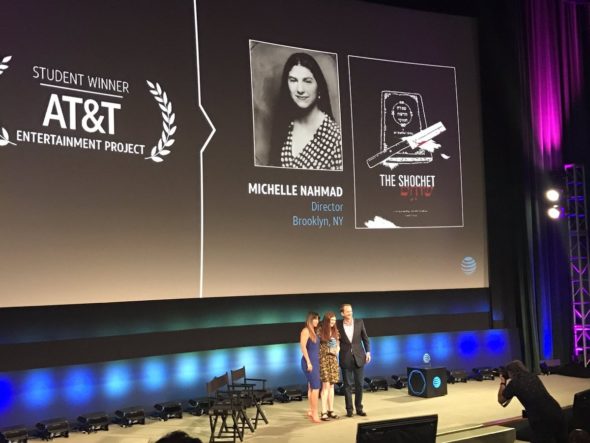
At AT&T Shape 2017.
Film is such a great tool for storytelling because of the way it transports people. Especially in independent or short films, you can get a distinct look into different time periods or communities. These films put you in the place of someone else, or allow you to get outside yourself and reflect on your own experience. You get to see things that are not what you see every day or if they are, you’re looking at them from a uniquely curated angle.
Why is filmmaking especially important for younger people and students?
Not to sound cheesy, but they truly are the future. These are the next row of people that are going to lead the way for us, especially now in these tricky times that we’re facing.
It’s really inspiring what so many young people are doing, especially with tech being introduced at younger and younger ages. I think students and young people can sometimes be the most experimental, the most willing to try new things because they’re not set in any one sort of way. Everything is new.
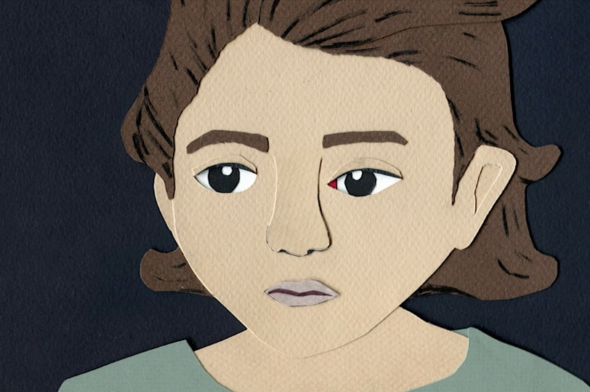
From The Shochet.
When I first started my grad school program, I thought storytelling was amazing but maybe sort of frivolous in comparison to “practical” jobs. But now, especially in our current global situation, I realize that it’s not only that storytelling can be enjoyable and something people are inspired by, but it’s also really necessary. This is important work, as the only way we’re going to understand one another is to take that leap of faith and put ourselves in someone else’s shoes. People are not likely to do that if they’re being preached to or judged or having articles thrown at them. Rather, I think something like a film or a book is a solid starting point for different, at times difficult, conversations.
Why should people consider entering this competition?
There is absolutely no reason not to. It’s totally accessible and it can open you up to a world that you might not expect you could be part of. It did that for me. It’s great that there are competitions like this that really address the need for more unique and diverse stories. Especially now, many people want to know more about other people’s experiences and try to understand the completely different way that they could view the same subject.

At AT&T Shape 2017.
Find out more about AT&T’s current competition and how you can share your own film with AT&T here.
*All images courtesy of AT&T and Michelle Nahmad.
Coming from generations of immigrants from Syria, Panama, Poland, Russia, and Costa Rica, Michelle Nahmad is invested in examining culture and exploring history in her design, illustration, and narrative work. She combines elements of the handmade or analog with the digital, bringing old world and new world subjects and tools together. Originally from Miami, Florida, she received her BFA in Communication Design and Art History at Washington University in St. Louis and an MFA in Visual Narrative at School of Visual Arts.
